Search Engine Optimization – Step by Step SEO Guide for New Websites 2024
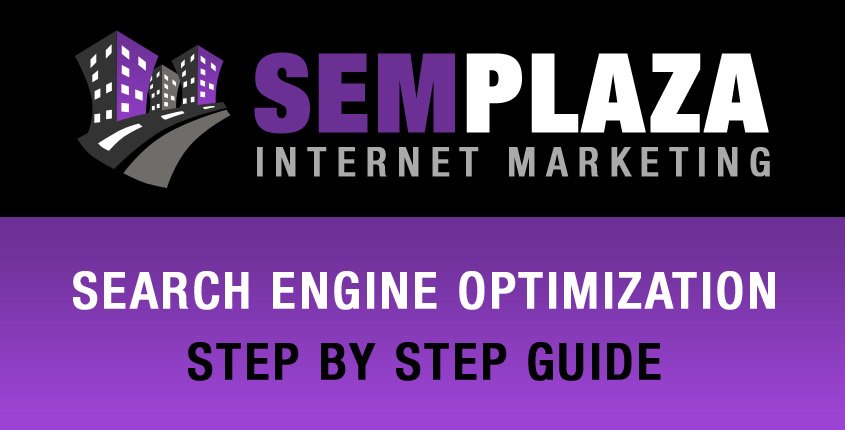
What is Search Engine Optimization (SEO)?
What is search engine optimization and what SEO strategies are still working? What things you should avoid when optimizing your new websites for search engines? Is your website compliant with the latest search engine guidelines? How to get traffic to your new website and increase the profit of your business in 2024?
Table of Contents
Read this Search Engine Optimization Step by Step SEO Guide for New Websites 2023 (it will take you like 15-20 minutes to complete) to find out the answer to all these questions and many others.
When building a new website, no matter if we are talking about a blog, a directory, a news site, a shopping cart, or any other type of website, only you know how much time and effort you put into it to offer the best content to your visitors.
Unfortunately, the good and unique content on your website
The good part is that this is different than with physical businesses where you wait and pray for someone to enter your store. If your business location is terrible, and no one passes by, there are very few things you can do to change that.
In the online environment, people from the other side of the world can visit your business in seconds. BUT, there is something you need to do to make this happen, and this “something” is called search engine optimization.
The most important thing you must have in mind when reading everything below is that you are doing all these things for your visitors and NOT for Search Engines. Any time you are making a small change to your website you should first ask yourself: Is this change going to help my visitors? If the answer is “Yes” then do it!
See below what steps you should follow to improve your on-site search engine optimization and increase your rankings in SERP (search engine results pages).
Step by Step SEO Guide 2024 [Overview]
- Conversion & User Experience Checklist: Language, Contrast, Menus, Images, Contact details, Background information, Forms, Whitespace, Banners, 404 Not Found, Fonts, Clickable logo, Call to Action.
- Website Content Checklist: Basic Principles, Ranking on keywords, Publisher, Introductory content, Amount of content, Content freshness, Site structure, Breadcrumbs, Duplicate content, Author, Categories and tags, Comments, Internal search, Block search results.
- Social Media Marketing Checklist: Sharing buttons, Social profiles icons, Rich Social Snippets
- Email Marketing Checklist: Newsletter Optin.
- Website Coding Checklist: W3 valid HTML/CSS, Combine template files, Minify template files, Inline styles, Heading structure.
- Mobile Optimization Checklist: Responsive design, Mobile Content, Mobile Usability, Accelerated Mobile Pages (AMP).
- Website Speed Checklist: Speed Test, Browser caching, Compression, Parsing of JavaScript, Content Delivery Network (CDN).
- General SEO Checklist: Domain Names, Titles, Meta description, Structured Data, Featured Snippets, Backlinks, Canonical URL, Permalinks, Pagination, Internal linking, Outgoing links, XML sitemap, HTML sitemap, Crawling.
- Updates & Security Checklist: SSL Certificate, Install up-to-date.
- Bad SEO Techniques Checklist: Avoid SEO practices.
- SEO Tools: Best SEO Tools
Increase Conversion & Improve User Experience
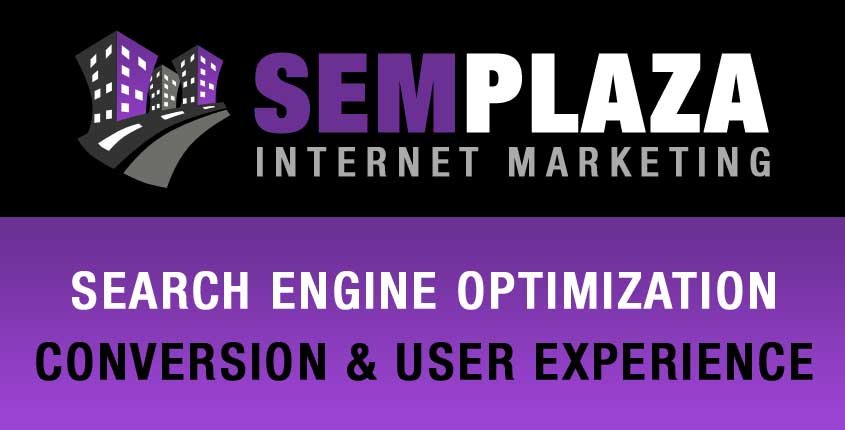
Conversion optimization is the process of turning your visitors into actual customers or returning visitors. This is closely related to usability and/or user experience, so we have combined these. There are several ways you can improve the user experience on your site and increase the conversion rate.
Use clear and normal language
This is a factor that is often overlooked and can frustrate visitors. You should use language and words that visitors will understand. Be clear and direct in your writing and always keep your audience in mind. Don’t focus on what to tell them, but instead focus on giving the prospective customer as many arguments as you possibly can as to why their lives would be better after buying that specific product or hiring your services.
Avoid using too many technical words as this will make the text harder to read and use transition words, which will make the text easier to read.
Writing very long paragraphs should also be avoided because they will discourage
Add subheadings to your text to improve its readability and avoid starting consecutive sentences with the same word.
Avoid misspelling and grammar mistakes. Not only your visitors will lose trust in what they are reading and leave your site but it’s also annoying for them and Search engines will rank it as low-quality content. Search engines care about the experience of your visitors on your website more than you think.
Text/Background Contrast
There needs to be enough contrast or difference in color between your text and the background of that text. If there is not enough contrast, the text becomes unreadable for elderly or poor-sighted people. For these people, a bad contrast ratio makes your website really unattractive and they will immediately leave.
Website Navigation Menus
The website should have a menu very well structured with categories and subcategories. Also, it’s important that your main sections are reachable from all the pages.
If you are using a fancy menu with all kinds of effects you need to make sure it’s working properly on all browsers, screen sizes,
Our advice is to keep it as simple as possible. The use of too much javascript may decrease the loading time of your website considerably.
Images Optimization
Images create a richer experience on your website. They add extra information and emotion to your textual content. Besides that, images break up long text and make them more attractive to read.
You should use images within the texts, to make the texts more attractive for your visitors.
The file size of the images should not decrease the loading time of the page because your website speed is critical for your search engine optimization plan. Make sure images are well optimized in a .png , .jpg or .jpeg file type. The most common image file type used is jpg, but if you need to have images with a transparent background you have to use .png.
All the images should have descriptive file names with the words separated by the “-” sign. Make sure the file names are not too long. Avoid using spaces inside the file names.
You should not use important texts in images because search engines will not be able to read them.
All the images should have descriptive Alt tags so search engines understand what they represent. Avoid keyword stuffing in Alt tags.
Also, make sure the images on your website are displayed in the dimensions they actually are, allowing for optimal loading times and the best quality images. If you are using a different dimension the image may look blurred when it’s resized or it may take more time to load than is necessary (eg. you use a high dimension image to display a thumbnail, instead of using a small dimension image to display the same thing).
Many websites are using sprites and you should use them too. A sprite is a collection of images in one file. It will reduce server calls and therefore speed up the website. More information on sprites and a great and easy-to-use tool to add sprites can be found on SpriteMe.org.
Contact Details
Your website should have a contact us page so your visitors are able to contact you. Many webmasters are not displaying an email address to avoid getting unsolicited emails from robots crawling the web for email addresses. Some webmasters use a trick and display their email address as an image to make it harder to be detected by robots. In case you don’t want to make the email address public at all the use of a contact form is another option.
Most visitors prefer a contact form because it’s much easier for them to contact you. They can start typing the message directly without having to copy your email address and go to their email client to send you the message. Make sure the form is actually working because that can be very frustrating for users. A confirmation message should show once the message is sent for the user to know the form worked.
The main email address should have the domain name in it, which looks more professional than for instance a gmail.com address.
You should also list your physical address on the site. Knowing you have an actual physical store, warehouse, or headquarters where you can be physically reached adds a lot of trusts. It shows you are an actual business. Search engines like this as well because it lets your visitors know more information about who is behind the website they are on.
Again, you are not optimizing your website for search engines but search engines care about what your visitors want and so should you.
Another good practice is to mention your business social pages on the contact page. This will give your visitors an alternative way to get in touch with you.
Business Background Information
It doesn’t matter if the website is about selling products, offering a service, or providing news or information, your potential customers/clients will also want to know a bit more about the company owning the business. People are becoming more and more critical of environmental awareness, the social commitment of a company, and things like that. They want to know who you are and if your company is really interested in solving their problems and not just only to make a profit.
There should be a page or pages on your website with background information about the company. The About page should be appealing and contain personal information. The use of photos of people who work at your company/website adds a personal touch to your About page.
Forms
Almost every website uses forms: for contact purposes, to request a quote, or to invite the visitor to take part in a survey. Forms provide a chance to have contact with the visitor and give you the opportunity to send additional information.
There are some practices you should bear in mind when setting up forms.
Make sure you are not asking a visitor for too many details in your forms, ensuring the forms are not unnecessarily long.
The forms should be to the point and visitors should have no trouble filling them.
There should be a clear button that is not blended in too much or simply too little.
The forms need to have all of their elements styled correctly so visitors can easily see what needs to be done or inserted in each field. Test how they work on multiple browsers, screen resolutions,
Submitting a form should always be confirmed by a Thank-you message that is located in a clear, visual spot, so the visitor will understand the form has been sent and everything went ok.
If you are asking for personal information like a name or email address in your forms, these pages should be processed via a secure connection (SSL). Also, make sure all the personal information is handled and stored according to the laws (eg. GDPR for EU visitors)
Whitespace
‘Whitespace’ or ‘negative space’ is the space between elements on a website. If the text or sections on a site are too close together, it becomes less easy to read so make sure the text has sufficient whitespace and is therefore easy to read and sections can be easily distinguished. This also becomes a problem and a bad user experience when clickable elements are very close together. On touchable devices, this will lead to clicking on something else than what you intend to, which can be very frustrating.
Advertising Banners
There has to be a healthy balance between banners and content. Even if banners are your main source of income, you should always monitor if your banners become annoying for visitors. When your traffic goes down because of that, the revenue of your banners will go down as well. If the banners cause bounces, it might even lower your rankings.
Make sure the website is not having too many banners. To get you an idea, most PPC networks allow you a maximum of 3 ad units per page. Anything beyond that might be considered too much. Of course, it depends on how long your pages are and how much content do you have on them. The ratio between ads and content should be decent and not annoying to visitors. Search engines need to see there is a clear focus on content with an acceptable amount of banners to accompany that content.
If there is a top banner it should be blended nicely in with the design, making it less annoying than an obvious banner.
Avoid pop-up banners or other types of banners that are preventing the visitor to access the content they come up for.
Not Found Page (404)
A 404 page is the error page a visitor sees when a URL of your website can’t be reached. Possible causes are a page that has been removed or an invalid dynamic URL. A 404 page is very important. It doesn’t have to be an endpoint on your site, it could, in fact, be a starting point for a very good session. You can test your 404 Page by going to a page like http://example.com/fake404 (of course replace example.com with your own URL).
The 404 should be like any other page on the site. It can have content on it. There should be a message with the description of the error to let the visitor understand something is wrong with the page they expected to find.
The 404 P
You should list the most important posts/pages on the 404 P
Make sure your 404 pages come with the correct HTTP status code (404 Not Found) so search engines know as well those pages are missing. If the pages are moved, make sure to set a proper redirect to the new location.
Fonts Used
The choice of the font has a major impact on the readability of a website. Here are the web fonts commonly used.
You need to make sure the texts can easily be read by all visitors. Don’t use more than 2 font types on the website otherwise, your pages will look a little messy and they will be harder to read.
Use a decent base font size. It makes your content easier to read on larger screens and for poor-sighted people.
Make sure the used font types support the font size used, otherwise the text may look distorted.
Favicon
The website should have a favicon that is clear and related to your brand. The favicon will display in the browser next to the URL, next to the titles of the pages (browser tabs), and inside bookmarks/favorite pages.
Clickable logo
A logo should be an alternative way to navigate back to the homepage. This is a common practice and everyone expects the logo to be clickable.
Make your logo a link to the homepage of your website.
Call to Action
Doing search engine optimization and bringing traffic to your website is not enough for having a successful business. Your visitors need to take some action on your website and they need a little help with that. They should never forget why they came to your site. A call-to-action will bring more focus to your page, reduce the bounce rate, and direct visitors to where you want them to be. A phone number telling them to call you, a contact button telling them to ask you for more details or schedule a meeting, etc. should be visible on all pages.
When adding a call-to-action make sure that draws enough attention. The call-to-action should stand out more so it should have a distinctive color and high contrast. Write it in an active voice and make sure it’s inviting.
Make sure people notice the button, not just due to its color, but also due to its size. Add the call-to-action above the fold (what you can see without scrolling).
Avoid having multiple call-to-actions on the same page, otherwise, visitors will feel disoriented.
Website Content
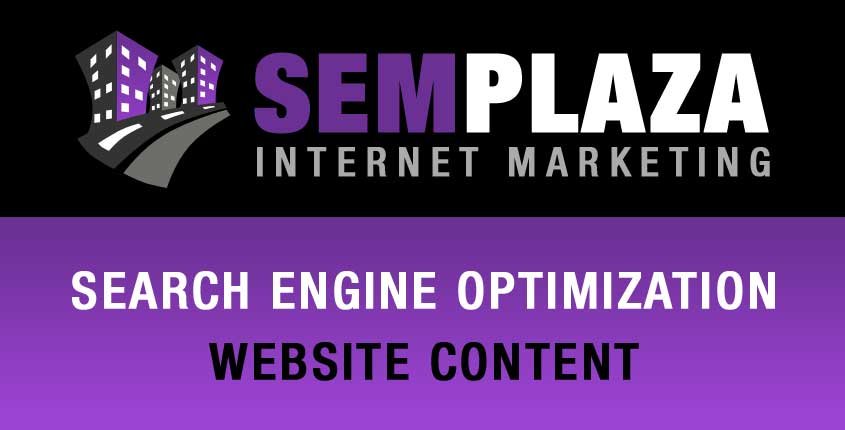
Basic Principles
Below we are going to discuss the basic principles for your site content to make sure your visitors will find it valuable and the same time it’s well optimized for search engines.
The most important principle is to make your content primarily for users, not for search engines.
Your users should not be deceived when coming to your site, otherwise, they will not find what they come up for and they will leave instantly, which will hurt your website bounce rate. At the same time, they will never return to your website and you will lose them forever.
Avoid tricks intended to improve search engine rankings. Ask yourself, “Does this help my users? Would I do this if search engines didn’t exist?” Think about what makes your website unique, valuable, or engaging and make it stand out from others in your field.
Have quality content that people will start linking. The more backlinks your content has the better it will rank in SERP (search engine results pages).
Ranking on keywords
First of all, you need to find some good keywords using a keyword research tool and decide what keywords are less competitive and could bring you more traffic faster and with less effort.
When appropriate, use locations inside your keyword phrases together with niche-related keywords to better target your audience.
You must also understand that you should not try to optimize your entire website for a certain keyword, but use only one page per keyword. Sites don’t rank, pages do. Otherwise, your pages will compete themselves for the same keywords
Make sure your keywords are clearly used on the website inside the right places (h1, h2, h3-4, p) and keep the keyword density between 0.5% and 3% for the entire site. It’s important to have the focus keyword showing inside your first paragraph, so it doesn’t take too much time until the user starts finding information on the topic he was searching for.
When starting a new website you should optimize for long-tail keywords with high interest (more searches) that most possibly have less competition than really generic ones in SERP. Once your website will grow and become an authority in your niche you can target more competitive keywords.
Here are some keywords ranking tools we suggest you use to monitor the position of your keywords in SERP (search engine results pages).
Publisher
If you are an online publisher, you want Google to tell about that and make sure Google understands which company is behind the website so it can show an extra informational block in the search result pages.
Since Google+ was shut down, the rel=publisher and rel=author tags are no longer used either. Google now recommends using structured data to name the author/publisher of a post.
Introductory content
Homepages and archive pages tend to be large collections of articles or products that have a common thread. The introductory content helps both visitors and Google to identify that thread. The introductory text has two important goals: 1. Tell your visitor what to expect; 2. Tell Google what to expect. So be sure to add it to both types of pages.
There should be introductory content on the homepage, meaning the purpose of the website is immediately clear to any kind of visitor.
You need to add introductory content to category pages. Introductory content is the glue for category pages. It tells visitors and Google what the articles or products on that page have in common. Think along the lines of 250-300 words for that introduction.
Amount of content
Adding sufficient textual content really is essential to add value to your website for Google.
You should think along the lines of at least 1500 words per page you want to rank for. The reason is simple: a page can’t be the main page for a certain topic when there is not enough textual content. You can’t describe your main product or subject (keyword) in three sentences and expect Google to believe you are the number one authority on it. If your competitor has a similar page, with a lot of text, images, and videos, it is likely that he will rank higher for the keyword.
Content Freshness
Google is using Published Date and Last Update date in Google search results pages and ranks better new and fresh content.
To increase the chance of displaying these dates inside SERP snippets, the dates should be added as microformats inside the code.
Many webmasters are using this trick to not display the Published Date on posts, and only show the Last Update date. You can do this too, but don’t think Google will not know the truth. You can hide the publish date, but the date when your content was first added inside Google’s index there is no way to hide.
The best thing you can do for your visitors is to keep your website updated. Google will appreciate this and it will show its appreciation by ranking your content higher.
If you have the possibility to update your posts every few months it would be great. No one likes old content because there is a big chance that the information displayed is outdated. Imagine someone seeing inside SERP multiple results for a key phrase he just searched for, some of them published or updated 1 month ago and yours updated 3 years ago. On which results do you think the user will click for more information?
Site Structure
The content on a website should be structured in the right way. If a visitor is browsing a website, there should be a natural ‘flow’ over the website. By structuring content like a funnel, going from broader topics to specific pages, it will be easier for both visitors and Google to understand the content on the website. If you do this right, every step in that structure has an optimized page that is also a gateway to the next step in the structure. That structure should be reflected in all elements of your website.
There are a few things you can do to obtain this structure.
The menu of your website should be well structured so every page on your website can be reached in a couple of clicks.
Breadcrumbs should also be used (except on your home page) and reflect the site structure.
Permalinks should follow the site structure, which makes it easy for Google to determine your content structure and index your website.
Breadcrumbs
Breadcrumbs improve the ability of users to move across your site. They allow for users that end up on one of your pages to immediately understand where on your website they have landed. Besides that, they allow search engines to understand the structure of your site by following the breadcrumb trail (internal links). Every site that uses more than one level of content should have breadcrumbs.
In other words, if your website has more than a couple of pages you should use breadcrumbs on every page of the website.
Breadcrumbs should follow the logical structure of the website. All steps like categories and/or parent menu items are included. The breadcrumb trail should have links for all steps in the trail.
Your Breadcrumbs should be located on an obvious spot in the design of the website, usually, this is on the top part of your layout, below the header and the top menu.
The home page does not need breadcrumbs because it is obvious where the visitor is inside your website and they cannot get to a higher level than that in your site’s structure. That being said, breadcrumbs here would not help the visitors in any way. Also, the homepage usually has a different layout than the rest of the website, and displaying that text would mean being forced to change the design for it.
Duplicate Content
Duplicate content is created, when the same content is available via multiple URLs on the same website or via multiple websites. One of the results of duplicate content is that Google doesn’t know which page to list in its search results. Also, many of them will not be indexed or they will have a very low rank.
Be sure to prevent duplicate content on your site. Aside from confusing Google, inbound links might go to different web pages, reducing the impact of those links.
The rule is simple. No duplicate content should be found on your website itself and content should not be copied from or to other websites either.
To check if other webmasters are copying your content you can use one of the many plagiarism tools available online. The same tools can be used to check your content before posting it to make sure it will not be considered duplicate content. This issue is very common when you are not writing the content by yourself and you have unprofessional writers doing it.
The good thing is that duplicate content is not attracting any penalty from search engines as many believe but it is not adding any value to your website either. In the worst case, search engines will not index that duplicate content or if they will, that content will not rank very well. This isn’t a penalty but a result of ranking better the original piece of content than the copied one. This makes a lot of sense..
Author
Highlighting the author of a post is always a good idea. Don’t just use your brand name, but use the actual writer. This will help to build authority for both the writer and the company he or she works for. Just a simple link to a separate page with for instance a short bio, a picture, and perhaps links to personal social profiles will make your article much more personal as well.
So, your posts should have a link to an author page or a short bio on the author. Adding more information to an author will increase trust and authority.
Categories and Tags
Categories and tags are there to help you structure your posts. Doing that will result in a better understanding of your site by both your visitors and the search engines.
You should use categories and tags to structure the content and make sure they are linked at posts, so visitors can easily click on a page listing related articles from the same category or using the same tag.
Make sure the website has the right amount of categories for the content you provide.
Categories should be chosen wisely, to make them suitable to be
Tags are describing your content in more detail than the more general categories, which makes them a site structure on their own and thus valuable for both users and Google.
Avoid having too many tags. Their purpose is to group multiple posts on the same topic, so if a tag applies to a single post, it should probably not be used unless you are planning to add more posts on that topic in the future.
Comments
Comments have multiple purposes. They are great for interacting with your audience or for putting together a Q&A section on that subject. They also make users spend more time on your website reading other people’s comments or writing their own. Another benefit is that people tend to use the keyword they also use in search when describing a topic or asking a question. That might be an alternative for the keyword you try to optimize the page for.
If your posts or pages are suitable for having a comment section you should definitely have this feature enabled.
Internal Search
Internal search is a great alternative navigational option that comes in handy for larger websites, or websites with very specific information on a topic. There are a number of ways to add that internal search, like Google Custom Search, Relevanssi for WordPress, and others. The common ground is that most of these tools not just display a number of search results, but the order and present these in a relevant, clear way.
If your website has a bigger number of pages you need to have a search option available for your visitors and make sure it has some advanced features like highlighting the “searched for” keywords, for instance by making it bold (like in Google’s search results pages), showing a snippet preview of where the keyword is used in that page, have the results ranked by relevance (make search results more relevant by for instance adding more value to titles containing the keyword). For easier browsing, the search results should also be accompanied by the featured image of the posts or by product images.
Block Search Results
As a visitor, you don’t want to end up on a search result page when clicking a result from Google. Google also prefers to land on a regular, higher-quality page instead.
You can prevent internal search result pages to be indexed in Google by adding a
Social Media Marketing
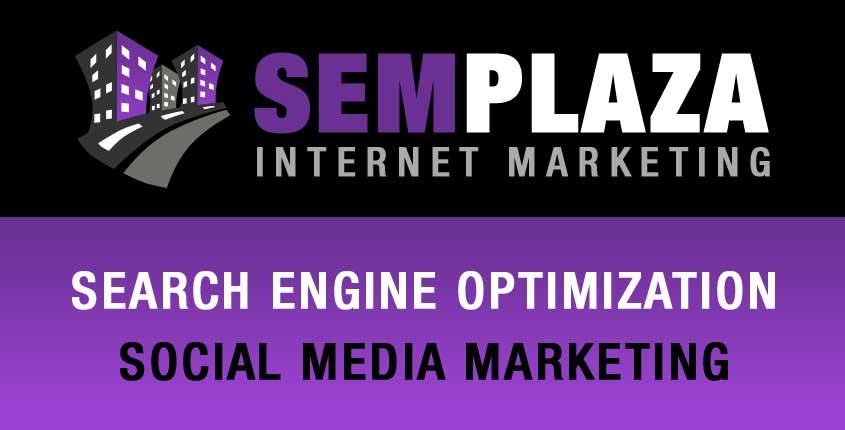
Search engines are increasingly using so-called social signals as a ranking factor for pages. Because of this change in how search engines rank sites, social media marketing is now a required part of each SEO campaign.
Sharing Buttons
Adding sharing buttons to the website will allow people to easily share what they’re looking at with their friends. Besides that, a high number of shares also indicates the relevancy of the post for the community and helps build backlinks to your website which can bring additional traffic.
Add social share buttons to easily market the content and use them across the entire website, not only on your blog or shop pages.
Place the sharing buttons right below the content where they are clearly visible. They should not be too big or too small and make sure they look like share buttons, so they can’t be mistaken for links to your social profiles, for instance. Do not use too many sharing options.
Social Profiles Icons
The social media icons should be displayed on all the pages of the site, and inside all emails/newsletters sent to customers/subscribers.
Your social media icons should be clearly related to your
Rich Social Snippets
The website should have the OpenGraph tags in the source code, which allows for better sharing on Facebook, Instagram, LinkedIn, and other social networks that are compatible with this tag.
Twitter has its own standard for social snippets, called Twitter Cards.
Pinterest called their rich snippets “Pinterest Rich Pins” and the procedure of implementation is similar to Twitter Cards.
Email Marketing
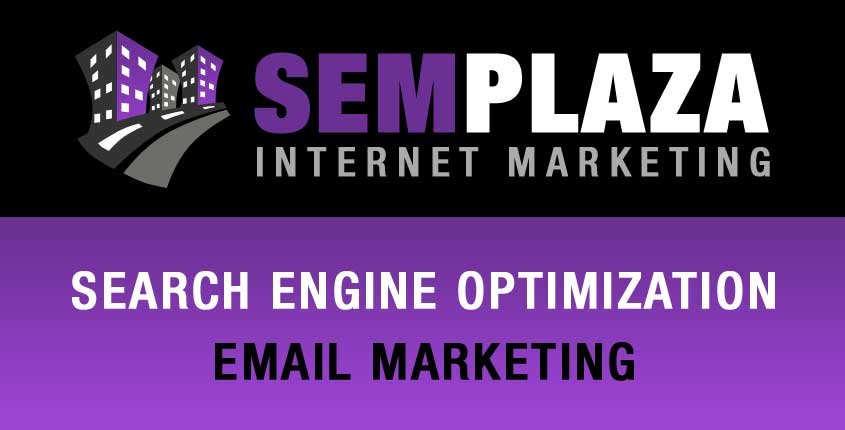
Newsletter Option
Building lists of newsletter subscribers is a good idea because you can make some of the visitors return to your site using email campaigns. Besides the SEO benefit of increased traffic and returning visitors, they can also be easily turned into customers.
A newsletter option is a great way to get return traffic from visitors that have not visited your website in a while so make sure to have a newsletter option on a prominent spot, so it’s clearly visible to the visitors.
Your subscription option should also have a clear button, displayed next to the name and email fields, in the right size.
Website Coding
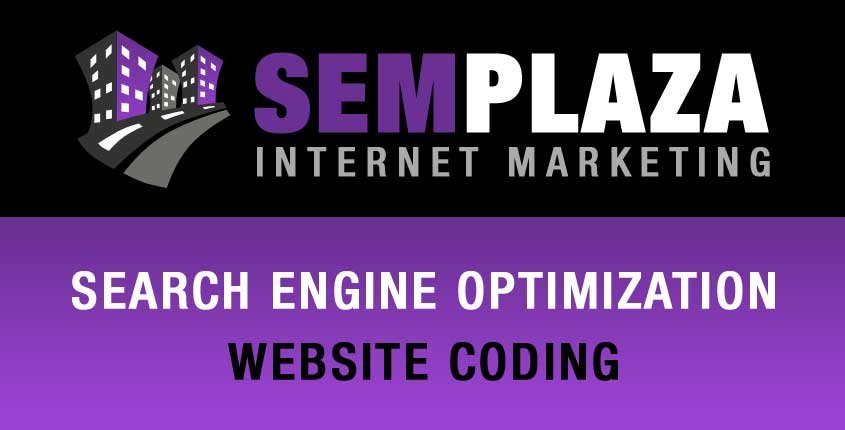
For SEO purposes, there are a number of things to take into account related to your website coding. The template code can influence the speed of the website, the way Google is able to index the website, and also how a website is shown on different devices.
W3 Valid HTML/CSS
Make sure the code is valid for all the pages. There are multiple tools available to help you check the validity of your code. W3C is one of the best and it has tools for both HTML
Combine Template Files
Before serving the website to a browser, it is possible to combine JavaScript (JS) and Cascading Style Sheet (CSS) files so the browser only has to grab one file instead of several. This simply means there will be little time wasted retrieving all files and reading them and this will increase your website speed considerably. This could be done manually, or for instance by using a plugin (like WP Minify Fix for WordPress).
Minify Template Files
Before serving the website to a browser, it is possible to compress JS and CSS files. This means for instance that most comments in those files are removed, and whitespace-like tabs and spaces are removed where possible. It means the file will be served to the browser minified (in the smallest possible file size). This could again be done manually, or for instance by using the plugins mentioned above at Combine template files.
The process will decrease your CSS and Javascript file sizes, which will result in faster loading of your website.
Inline Styles
Inline styling should be avoided because the
Heading Structure
Heading structure used to be more important than it is nowadays. Still, having a proper heading structure makes it easy for Google and a visitor to scan your website and for yourself to maintain a consistent hierarchy in your textual content.
For this reason, headings should be used to structure the content, for content sections and page titles.
The main title should use H1 and there should be a single H1 per page. Many webmasters are using the H1 tag on the logo, so make sure your template is not built that way because that would lead to having two H1 tags on the page.
Paragraph headings are used to make your texts scannable for visitors and Google. For this, you can use H2 and H3 tags. Make sure the hierarchy of these tags is right. If you need more subtitles under H2 those need to be H3. If the H3 needs more subtitles those need to be H4. You cannot have for example H2 inside H3. It’s also good not to skip a level (for example having H4 subtitles under H2, and no H3).
Sidebar and/or footer headings should use at most H4 for titles.
Mobile Optimization
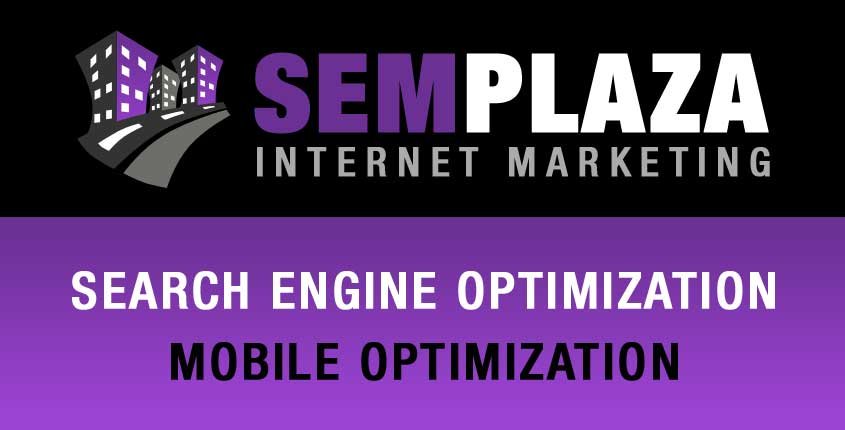
Responsive Design
You should use a responsive design which is the optimal design solution for all devices. Responsive web design means the website is viewable in a good way in browsers of all widths (from desktop screens to mobile phones and tablets). The website needs to be readable on all devices without having to zoom and pinch to read the content. The screen should automatically adjust and not just show a part of it.
So, make sure the website scales down nicely for a number of tablets and mobile screen sizes. Make use of Viewport Meta Tag to tell the browser how to adjust the content.
The content should not rely on a particular viewport width to render well. Using f
Make sure the font size of your text is not too small on mobile devices, otherwise, your visitors will be forced to zoom in to be able to read. When you specify your page viewport, set the font sizes to scale properly.
The best option to adjust your design and content to different screen sizes is by using CSS media queries.
The menu should work fine on a mobile phone or tablet. If not, users will have difficulties navigating your site and will leave.
Do not use large fixed width elements because they will break your design and you will need a scroll bar to see them.
Your touch elements should not be too close to each other on mobile devices, to avoid users having difficulties clicking on them with their fingers. If the links and buttons are too close, the user may click on something else than the desired element. Make sure to test the size and spaces between clickable items for mobile visitors and fix any errors. Since this is directly affecting the user experience, if not done properly, your website may end up penalized by search engines.
Mobile Content
Always allow Googlebot access to the JavaScript, CSS, and image files to properly render the content. If not all the page resources can be loaded Google will not be able to see and understand the page properly. This can be checked by using the “URL Inspection Tool” in the Search Console.
Some types of content, (eg. some video formats, Flash files, etc.) are not playable on tablets and mobile devices. When users will visit such a page, that type of content will be replaced by an error message. Avoid unplayable content and always test how your website looks on all the devices and if everything works properly.
Try to avoid displaying any overlays (interstitials, pop-ups, etc.) that cover the content. This can be really annoying for the users visiting your page.
Mobile Usability
Check on mobile usability using this tool: https://www.google.com/webmasters/tools/mobile-friendly/
Google will display all Mobile Usability issues inside the Search Console in the Mobile Usability report. This report will show which pages have usability problems when viewed on mobile devices.
When issues are listed you can click on them for additional details, including a sample list of pages affected by that issue, information about how to fix it, and a process to notify Google about the fixes.
Accelerated Mobile Pages (AMP)
Consider having an AMP version of your website for mobile devices (phones and tablets). You can learn more about AMP here.
Website Speed
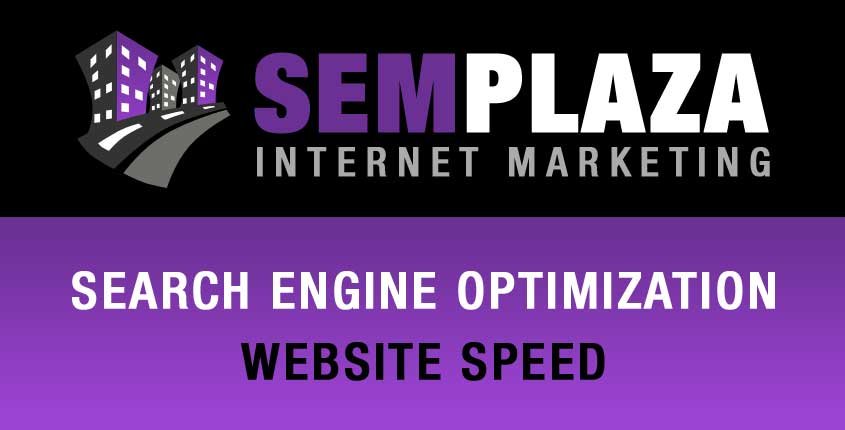
Site Speed is getting more and more important to Google and to users. Always try to make your sites as fast as possible.
Speed Test
Speed is very important for search engines because it affects the user experience on your site. Time is the most valuable asset and no one likes to wait too much time for a website to load. Most of the users are searching for information and they expect to find it fast.
You should check your site speed with PageSpeed Insights from Google https://developers.google.com/speed/pagespeed/insights/ and make sure to stay over 90 S
Browser Caching
Browser caching makes sure that static files like photos are given an expiration period. This makes sure files are cached in a better way, significantly reducing the loading time of second and later pageviews on your site.
Turn on browser caching for your website and set the expiration times properly on the loaded resources.
Compression
Nowadays, most browsers support data compression for (consistent) HTML, CSS, and JavaScript files. That way, the amount of data sent over the network will reduce quite a bit and this may lead to a great download time reduction. This compression is enabled by configuring your web server to set the Content-Encoding header to gzip for all compressible resources. Deflate is also a (less common) option. It uses the same compression algorithms. Generally, is recommended to use gzip.
Parsing of JavaScript
JavaScript is used for making things look nicer, in most cases. If possible, only load that JavaScript after all other elements of your website are loaded and shown, so in the footer instead of the header of your template code.
We are aware that some JavaScript may be used to render important elements of your design (like menus), but those that are not, should be loaded in the footer of the template.
Content Delivery Network (CDN)
If a site is getting a lot of visitors, it might be beneficial to switch to a Content Distribution Network for all the static files. A Content Distribution Network is a network of servers, optimized for delivering static files across the world. Usually, these servers are closer to your visitors than your own server, and faster because they’re optimized for the delivery of static files. What this means is that all static files, like images and JavaScript, would be loaded from the CDN servers, which would mean that your own server has less of a load on it, making it faster.
If possible, use a content delivery network to serve static files, especially if you have a lot of them on your website.
General SEO

Domain Names
It’s really important when purchasing your domain name to choose a Top-level domain that can be trusted. The best option for you is a .com domain or, if .com is not available you should go with .net or .co. You should stay away from TLDs such as .info, .biz, .name, etc. because these are considered as low quality and many times used by spammers.
If your website is in a certain language and your business is targeted to a specific country, it’s ok to use a Country-Specific top-level domain like .uk (United Kingdom), .fr (France) .dk (Denmark), .de (Germany), .es (Spain), etc.
As far as the name of the domain it’s good to have a keyword you are targeting inside it you should definitely avoid using multiple keywords (like a whole sentence) as it will be considered keyword stuffing and penalized by search engines. Google search engine launched a filter in 2012 known as EMD Update with the purpose of penalizing Exact-Match-Domain websites and avoiding poor quality websites to rank well due to the keywords used inside the domain names.
Using hyphens should be avoided as well, but if that’s not possible you should try not to use more than a
If you have to separate two or more sections of your site, folders and subfolders are considered better for SEO than subdomains, because the subdomains are treated by search engines as a completely different business than the one from the root domain (See for an example all WordPress blogs that are registered by users as subdomains of the main WordPress domain. They are not and will never benefit of the ranking and authority of the root domain). When your content is placed in folder/subfolders of the root domain they are considered as being a part of the same business and benefit from the rankings of the domain. If you use multiple subdomains, you will need to perform the “offsite SEO” tasks like link building for each of them.
Many webmasters consider that the age of the domain is an important ranking factor and has an SEO benefit for your site, but according to Matt Cutts from Google this is not the case, the registration date of a domain name is not important. If you are planning to spend more money on a domain name just because it’s several years old you are doing a mistake.
Titles
Page titles are the titles that are displayed in the upper left corner and on tabs in your browser. It’s the title that is inserted with the <title> tag into the <head> of your website. Titles are still one of the key factors for rankings. Make sure titles are topical, preferably contain the keyword you want to rank the page for and have some kind of branding.
Make sure page titles are descriptive and concise. Avoid vague descriptors or unnecessarily long or verbose titles, which will get truncated when they show up in the search results.
Titles should include keywords you want to rank for and the most important keyword should be in the first half of the title. Also, make sure the keywords are found on the page as well.
Brand page titles at the end with company/website name. This will trigger recognition in Google, and people will be more willing to click your results.
Try to make your page titles around 65 characters, so Google will be able to show them entirely. This is not a fixed number, but 65 is the right number of characters to aim for.
Titles should be unique per page, or Google will penalize your website for the duplicate title. Even if it’s the same post but separated into multiple pages, make sure to add something additional (like a number) to the pages, to differentiate them.
Avoid keyword stuffing or words appearing multiple times inside a page title, and avoid using all caps letters or any kind of spammy-looking symbols.
You can read additional tips directly from Google guidelines here.
Meta Description
If written well, the meta description is the text that will be shown in Google’s search result pages, right below the title. It can have a huge impact on the click-through ratio from the search result pages to your website. When it contains the search query, Google will often choose to display it and highlight the
There should be a meta description on every page and post of your website that you want to be
Ideally, a meta description should be between 150 and 170 characters.
Meta descriptions should be unique per page. Duplicate meta descriptions are penalized by search engines.
Meta descriptions should be inviting and entice a user to click onwards to our website.
Same as for the Title of the page, avoid keyword stuffing, spammy characters like the dollar sign and similar characters, and avoid making all letters capped. If you want to make it stand out from the crowd, make a smart description to let the users know what they are looking for is on your page and your message there is more trustworthy. Make them curious at the same time. Doing it in a spammy way will only make them not click on it, and that will be a big signal for search engines that your page is not interesting enough and not relevant for that search.
Additional info on how to create good SERP snippets here.
Structured Data
Information on all structured data types and implementation codes can be found here https://developers.google.com/search/docs/data-types/article.
Once you implement all the structured data on your website you can test them using this tool from Google https://developers.google.com/structured-data/testing-tool/ and fix the issues.
Rich results in SERP can be tested using this tool from Google https://search.google.com/test/rich-results
Featured Snippets
Optimizing for featured snippets is a complex process that involves some research on questions that people would usually ask on search engines and adapting the content to include the answer to these questions. Additional tips on featured snippets optimization can be found here.
In case you want to prevent snippets from being created and shown for Search results the <meta name=”nosnippet”> tag can be used.
Backlinks
Backlinks remain the most important ranking factor for search engines. The type of backlinks tells Google if your website is worth linking to.
Backlinks should come from a variety of websites, and not only websites you control or where the link was posted by yourself (eg. directories, forums, blog comments, guest blogs, etc.).
You should avoid links from other low-quality websites or websites that are not related to your niche.
Avoid over-optimized anchor texts by re-using the exact keywords as the anchor text on every single website you are linked from.
Make sure to avoid any form of SPAM or building links using backlink generator software or buying link packages.
Canonical URL
Adding a canonical URL (rel=”canonical”) to the <head> section of a page allows search engines to determine whether you want the current page to be indexed or you think another, very similar, page should be shown in the search results instead. When the canonical doesn’t link to the current page, it’s basically as though you redirect the search engine to that other page and tell it: add the value of this page to that page, these are similar and I only want to show that other one in the search results. This is also a good way to deal with duplicate content.
So, make sure all your pages have a canonical URL set that points either to the current page or to a page that is truly similar to the current page.
Internal links to a page should match the canonical URL set for that page.
Permalinks
Permalinks should be topical and not crowded with numbers and IDs. If your website’s blog posts are not specifically linked to a date, why would you want to include that date in the permalink as well? If you leave out the /yyyy/mm/dd/ part, the focus in the permalink will be on the topic of the post. On the other hand, if your website is all about daily news or it does matter in any other way what the date of a post is, you might want to consider leaving that date in the permalink as well. Note that changing your current permalinks should always be accompanied by a redirection (301) of the old permalinks to the new ones.
Make your permalinks short and topical, avoid using special characters inside URLs, and always use dashes (hyphens) as word separators and not underscores. Google considers the underscore as a word joiner and not as a word separator. This was explained by Matt Cutts from Google, who also mentioned that using dashes instead of underscores to separate different words inside URLs will also have a minor ranking benefit.
Pagination
When having large archives on your website, you want all the pages in that archive to be easily accessible. The best way to solve this is to include a numbered list at the bottom of each page of that archive.
A numbered pagination can be used for archives and categories, but also on your search page, in case you have a search feature on your site, to split the big number of results. That will make it easier for the
Comments on posts should not be paginated. This way your readers that like to read other user comments will keep reading them and stay longer on the page and at the same time, they have the content on the same page if they need to check in something mentioned in a comment. Another benefit is that your page will be updated every time a new comment is posted. You also avoid having pages only with comments and no valuable content.
Internal Links
Links are important for your rankings. If you are an important website for a certain topic, it is very likely you will get links from other websites to your website, and that is the way Google will find you best. On your website, that also goes for your pages. You should link all pages from others, and if done right, f.i. by using the right keywords in your anchor texts, that will also help your rankings.
You should use cornerstone content. Cornerstone content means that your main page should have a number of pointers (links) from other pages on your website. By linking from related pages to that one main page for a keyword, you’re telling Google what page to rank first. The linking should be done by adding great anchor texts to these links. The anchor text is the text that can be clicked.
In conclusion, you should add links from within texts to important pages that you want to rank. Since you can completely control the anchor texts of these links, and the links are surrounded by relevant content, these links are really valuable for SEO.
Outgoing Links
Avoid using too many outgoing links on the pages. High OBL (outbound-link) pages are penalized by search engines which will label your website as a link farm (a website built for the sole purpose of selling links)
Also, avoid outgoing links to illegal sites, low-quality sites or irrelevant sites. Every time when you want to post a link to an external website find as much as you can about it. If something looks suspicious don’t do it. If a website is penalized and you link to it, you may end up with a penalty as well.
XML Sitemap
An XML sitemap is basically a list of links with all the pages of your website. Instead of filling out a form to submit a website to search engines, webmasters will submit the sitemap to search engines so they can follow and index the links inside that sitemap.
There should be a regular XML sitemap linking all pages and posts available on the website, and all taxonomies you want to have indexed.
In the case of multiple XML sitemaps, it might be a good idea to create an index XML sitemap linking all these separate XML sitemaps. There are a number of plugins available for this in case your website is built in WordPress.
The path to the XML sitemap should be added inside your robots.txt file. Having it here will let all search engines crawling your website know about its existence, and your website’s pages will be discovered and indexed faster.
HTML sitemap
XML sitemaps are good to have for search engines, but you also need to add an HTML sitemap for users. Not only will it provide yet another navigational option for the website, but some search engines are using HTML sitemaps.
Crawling
Use the robots.txt file on the webserver to manage how search engines should crawl the website pages. Keep the robots.txt file up to date.
Make sure that the site is submitted for indexing to all major search engines and that important content of the site is not being blocked from indexing. CSS files, javascript, images, and every resource that is needed to render the pages should be accessible to search engines.
Allow search engines to crawl your website without session IDs or URL parameters. Search engines will not be able to properly crawl your website and many of the pages will not be indexed.
All the important content should be visible to users. Even if Google and other search engines are able to crawl the hidden content (when using tabs or sections that are expanding), this content will be considered less important.
Avoid hidden content in general, because search engines might consider it added only for them and not for users. For example, divs with a lot of content hidden from CSS, text with the same color as the background or very close colors (hard or impossible to read by users), very small texts (like 1 px size), all these are black hat techniques and are penalized.
Your advertisement links and banners should not affect search engine rankings. For this, you need to add a rel=”
Updates and Security

SSL Certificate
SSL Encryption is now a ranking factor in Google’s Algorithm. What does this mean? It means Google is now penalizing any site that doesn’t provide an SSL secure connection. Have you ever noticed the green padlock next to the URL? That green padlock means that the website you are using is secured using some sort of SSL encryption. This means if you submit a contact form or an online donation all the data sent over the web is encrypted. Without SSL encryption any information you submit through a web form is not encrypted and is very unsafe.
Check your website for yourself. Do you see the green padlock? Does your website URL read HTTP or https? If your website is not encrypted it will be penalized in Google search. That means secure websites will receive favor over sites without SSL encryption. This is great news for secure sites but extremely bad news for non-secure sites… if you don’t have an SSL secure website you should look into having it updated right away.
Once you install an SSL certificate on the site, make sure all the resources on the site (eg. images) have https:// as well.
Even if your page is secure browsers may show it as non-secure if you are linking to external non-secure websites. Try to avoid that.
Install Up-To-Date
It’s really important to keep the system and the plugins/extensions you use up to date. Google even warns webmasters about updating their installs. If Google proactively sends out these messages, you can be sure they will also take this
Make sure the core of the system and all plugins are up to date.
Bad SEO Techniques
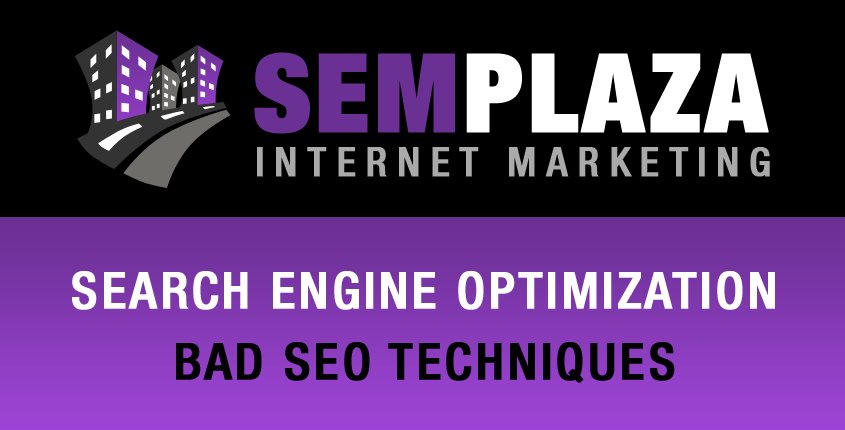
Avoid the following SEO practices:
- Use of content that is generated automatically or a language that does not look natural
- Keyword stuffing or loading entire pages with irrelevant keywords for the purpose of getting traffic for those keywords.
- Participating in link schemes with other webmasters or creating your own network of websites to have them link to each other.
- Having pages with little content or no original content
- Using cloaking and sneaky redirects
- Hidden texts or links that exist inside the code and search engines can read them, but users cannot see them
- Doorway pages are built for the whole purpose of ranking high and getting traffic for certain keywords and sending that traffic to other destinations.
- Using content scraped from other websites and published on your own website.
- Participating in affiliate programs without adding sufficient value for the users
- Creating pages with malicious behavior, such as phishing or installing viruses, trojans, or other badware
- Making an abuse of rich snippets markup
- Using scripts that send automated queries to search engines
SEO Tools
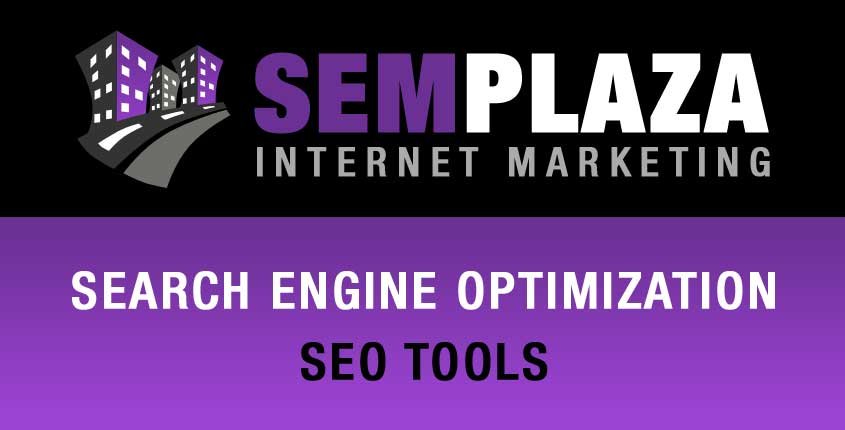
Best tools you can use to reach your search engine optimization goals and increase the traffic to your new website.
- Best All-In-One Search Engine Marketing Tools (SaaS tools that have multiple functionalities to help with your SEO: website audit, competitor analysis, backlink analysis, keyword tracking, monitoring, etc.)
- Best Keyword Research Tools (Tools to help you find new keywords to target on your website)
- Best Backlink Building Tools (Tools to analyze your backlinks and find new backlink opportunities)
- Best SEO Competitor Analysis and Spying Tools (Tools that can help you analyze your competitors’ websites and find out the keywords they are targetting, what backlinks they have, see what content is best working for them, etc.)
- Best Keywords Rank Tracker Tools for SERP (Tools to monitor the position of your keywords in SERP)
- Best SEO Content Optimization Tools (Tools for detecting plagiarism issues, grammar checkers, and other tools that can help you make your content better)
- Best SEO Issues Tools (Tools that can audit your website and detect SEO-related issues)
- Best SEO Plugins for WordPress Sites (All types of WP plugins that can help you with various SEO tasks)
We hope that you liked our article. If you see any information that you consider wrong or you can think of something we missed please leave a comment.
As a thank you for all this useful information we try to provide you for free, please link to this page from your blog, or share it with others on your social media accounts. Any backlink or share from you will help us grow and motivate us to continue.
Posted on: April 10, 2019